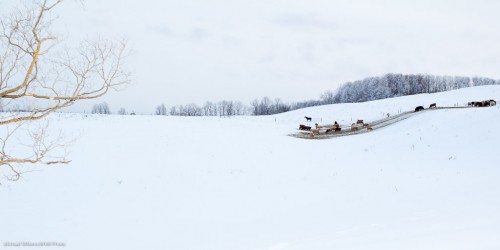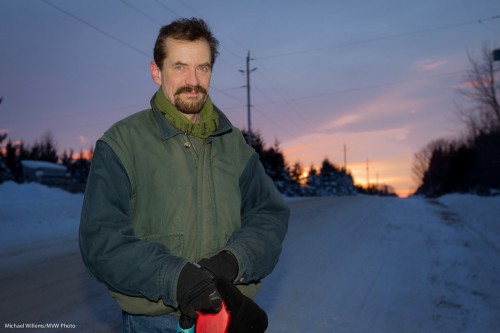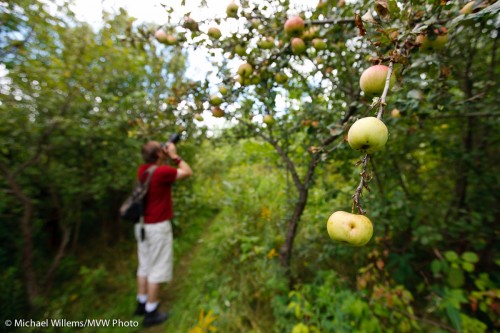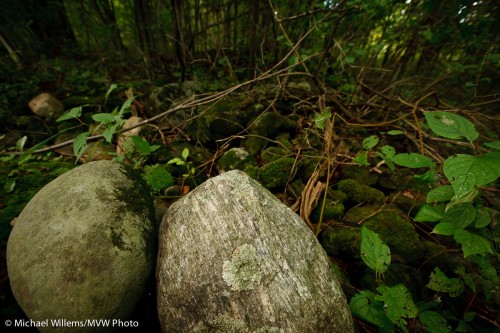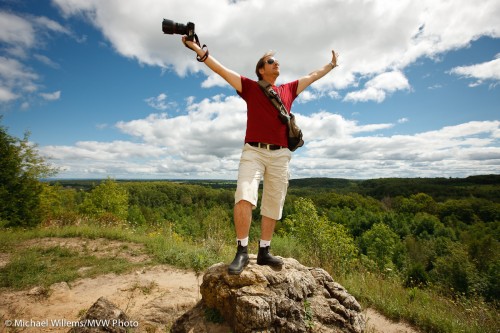..but cold. Can you see it’s cold?
Why? Because it’s bright and snowy, and a little blue (“cold”, even in photographer’s terms – which by the way are opposite to physicist’s terms).
Can you also see:
- Negative Space (much empty space to emphasize the animals’ isolation)
- The rule of thirds (“off-centre composition”)
Back to the light. To get that brightness, I had to increase exposure compensation to +1.7 stops. To get the colour, I had to choose the right white balance.
Conversely, a little later I wanted the background to be darker. I decreased exposure compensation, to minus one or two stops. That gave me this:
Yup. Me. And a few minutes later:
You see, lower brightness means more saturated colours (saturated means “not mixed with white light”).
And of course my speedlight is on the camera, to throw a little light onto the foreground. You would expect nothing less from the speedlighter.
I hope many of you can take similar landscape pictures this season.

